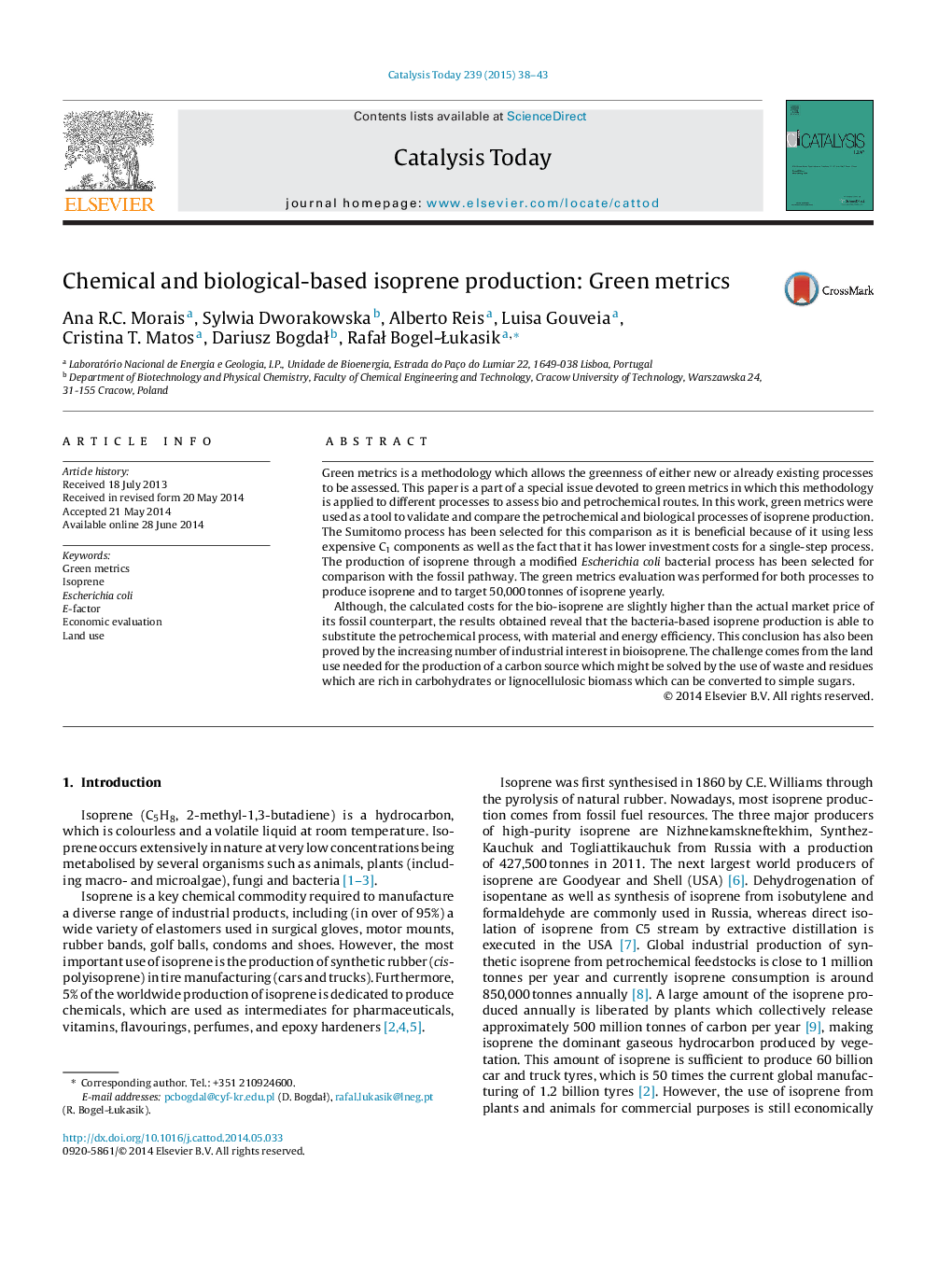| کد مقاله | کد نشریه | سال انتشار | مقاله انگلیسی | نسخه تمام متن |
|---|---|---|---|---|
| 53998 | 46992 | 2015 | 6 صفحه PDF | دانلود رایگان |
• Fossil and biotechnological isoprene production pathways were assessed by green metrics.
• Biotechnological isoprene production is competitive to fossil pathway.
• Economics of the biological process is equally good as fossil route.
• Material efficiency favours biological isoprene production method.
Green metrics is a methodology which allows the greenness of either new or already existing processes to be assessed. This paper is a part of a special issue devoted to green metrics in which this methodology is applied to different processes to assess bio and petrochemical routes. In this work, green metrics were used as a tool to validate and compare the petrochemical and biological processes of isoprene production. The Sumitomo process has been selected for this comparison as it is beneficial because of it using less expensive C1 components as well as the fact that it has lower investment costs for a single-step process. The production of isoprene through a modified Escherichia coli bacterial process has been selected for comparison with the fossil pathway. The green metrics evaluation was performed for both processes to produce isoprene and to target 50,000 tonnes of isoprene yearly.Although, the calculated costs for the bio-isoprene are slightly higher than the actual market price of its fossil counterpart, the results obtained reveal that the bacteria-based isoprene production is able to substitute the petrochemical process, with material and energy efficiency. This conclusion has also been proved by the increasing number of industrial interest in bioisoprene. The challenge comes from the land use needed for the production of a carbon source which might be solved by the use of waste and residues which are rich in carbohydrates or lignocellulosic biomass which can be converted to simple sugars.
Figure optionsDownload high-quality image (112 K)Download as PowerPoint slide
Journal: Catalysis Today - Volume 239, 1 January 2015, Pages 38–43
